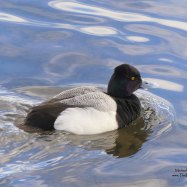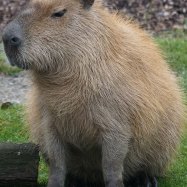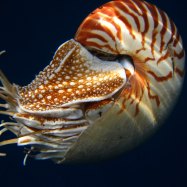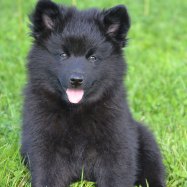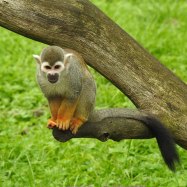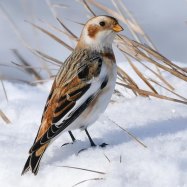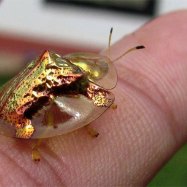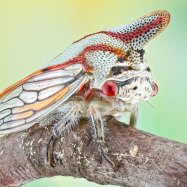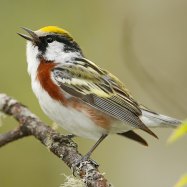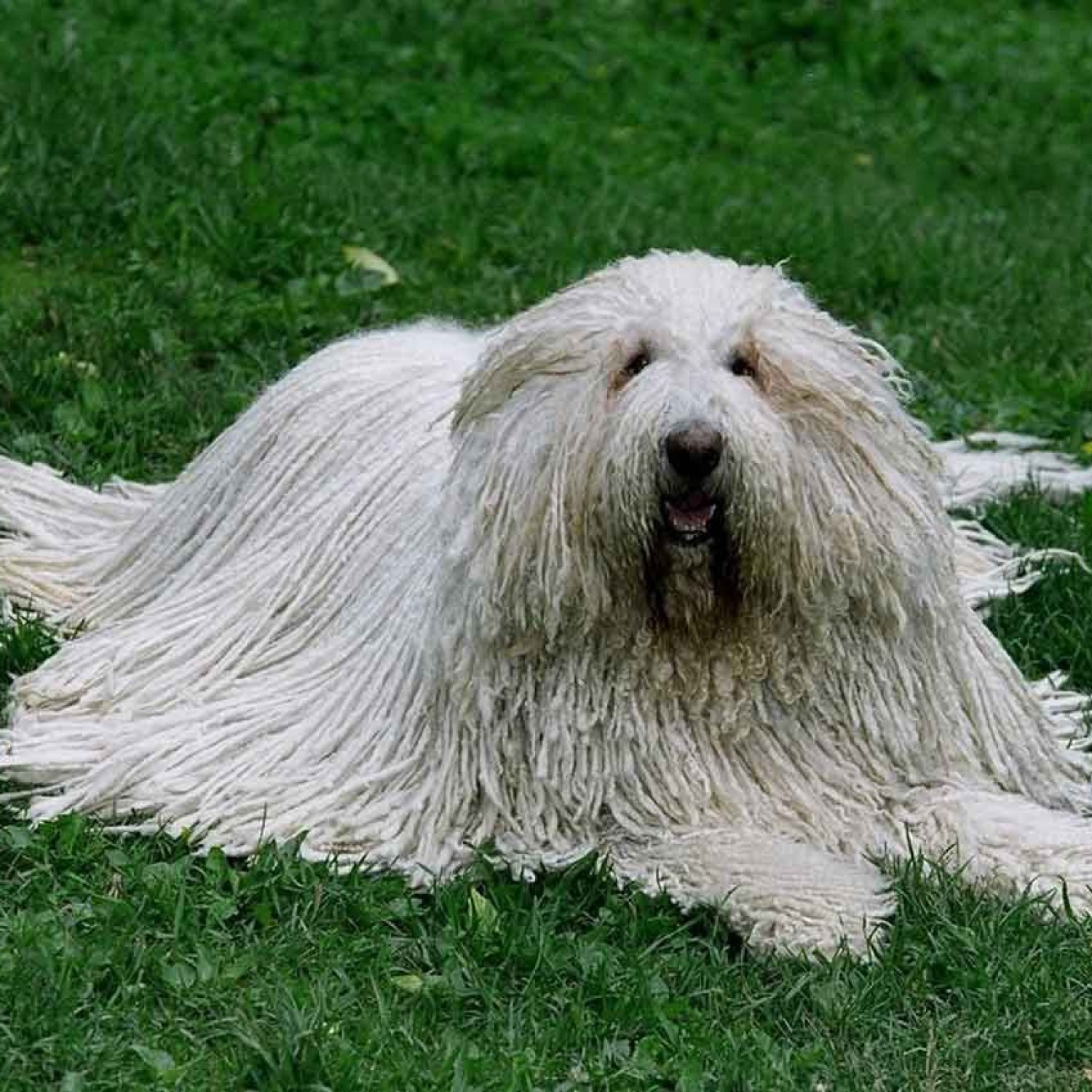
Komondor
25-32 inches
Meet the Komondor, a large and muscular dog known for their unique corded coat. Originally from Europe, they can reach lengths of 25-32 inches. Belonging to the Canidae family, these intelligent and loyal animals make excellent guard dogs and companions.
Animal Details Summary:
Common Name: Komondor
Kingdom: Animalia
Habitat: Grasslands and open fields
The Majestic Komondor: A Unique Breed of Hungarian Origin
Deep in the picturesque landscape of Hungary, an ancient breed of dog roamed the vast open fields and grasslands. With its striking white coat and muscular physique, the Komondor stands out as a one-of-a-kind breed that has captured the hearts of dog lovers all over the world. In this article, we will take a closer look at the remarkable features of this regal canine – from its scientific classification to its physical appearance and behavior.A Scientific Marvel
The Komondor, or Canis lupus familiaris, belongs to the animal kingdom, phylum Chordata, and class Mammalia Komondor. It is a domesticated breed of the Canidae family, which includes wolves, foxes, and other wild dogs. This breed is known for its strong instinctive guarding abilities, making it a popular choice as a livestock guardian dog.Origins of the Komondor
The history of the Komondor can be traced back to Hungary, where it was first bred by the Magyar tribes in the 9th century. These dogs were prized for their fearless nature and unwavering loyalty, making them ideal protectors of the large flocks of sheep farmers in the region.It is believed that the Komondor is a cross between the ancient Bulmastiff and the Russian Owtcharka breeds. Over the years, these dogs have gained popularity and spread to other parts of Europe and eventually to North America. Today, the Komondor ranks 158th in the American Kennel Club's list of most popular dog breeds.
A Habitat Perfectly Suited for Grazing
Grasslands and open fields are considered the ideal habitat for the Komondor. These dogs thrive in these environments and are most commonly found in Hungarian farms and ranches Keagle. Due to their strong protective instinct, they are usually kept in pairs to guard large herds of livestock such as sheep, cows, and even chickens.The Komondor's thick white coat, which is its most distinctive feature, serves as camouflage in the grassy plains, making it easier for them to blend in with their surroundings while keeping a close eye on their charges.
A Carnivorous Diet
As with most canines, the Komondor is a carnivore, which means it primarily feeds on meat. In their natural habitat, they would hunt and eat small animals such as rabbits, mice, and birds. However, as domesticated pets, their diet would consist of high-quality dog food rich in protein, vitamins, and minerals to support their active lifestyle. It is important to note that the Komondor is prone to obesity, so it is essential to monitor their food intake and provide regular exercise.The Birthplace of the Komondor
As mentioned earlier, the Komondor originated in Hungary and is known as the country's national treasure. It is also the official mascot of the Hungarian National Arm, and statues of this magnificent breed can be found throughout the country.The name "Komondor" is derived from the Hungarian word "koma," meaning "hostage," and "ondor," meaning "dog." This name reflects the breed's role as a guard and protector, staying by its owner's side at all times.
The Majestic Appearance of the Komondor
One look at the Komondor, and you will be captivated by its unique appearance. Its distinct coat is composed of long, thick, matted cords, giving it a shaggy and unkempt appearance. This coat is a result of selective breeding, with the aim of protecting the dog from predators and harsh weather conditions.These cords can reach up to 12 inches in length and require regular grooming and maintenance to prevent matting and dirt build-up. It is important to note that the Komondor's coat changes color from white to a light cream as it matures.
A Powerhouse of Strength
The Komondor has a large and muscular body, with a broad chest, deep abdomen, and powerful legs. It stands at an average height of 25-32 inches and weighs between 80-100 pounds. This body shape and size are ideal for its primary purpose – to guard and protect its flock from predators such as wolves, bears, and even human intruders.A Dedicated Defender
The Komondor is known for its unwavering bravery and strong protective instinct. They are fiercely loyal to their owners and will go to great lengths to protect their property and loved ones. However, this also means that they can be wary of strangers and might require proper socialization and training.Being independent thinkers, these dogs require firm and consistent training to ensure they understand their role properly. They are not recommended for first-time dog owners and need an experienced handler who can establish themselves as the pack leader. However, with the right guidance, they can be loving and loyal companions.
The Perfect Family Pet?
While the Komondor is not typically kept as a pet due to its working dog instincts, it can adapt to living in a household with the right training and socialization. However, it is essential to note that their strong guarding and chasing instincts can make them unsuitable for families with small children or other pets. With proper socialization from a young age, the Komondor can make a gentle and loving addition to a family.In Conclusion
The Komondor, with its rich history, majestic appearance, and unmatched protective abilities, stands out as a unique breed in the world of canines. Its distinct coat, strong physique, and undying loyalty make it a favorite among dog lovers and a vital member of many Hungarian farms. As with any dog, proper training, socialization, and care are crucial in raising a happy and healthy Komondor. With its unmatched bravery and unwavering dedication, this breed will continue to impress and amaze us for many years to come.

Komondor
Animal Details Komondor - Scientific Name: Canis lupus familiaris
- Category: Animals K
- Scientific Name: Canis lupus familiaris
- Common Name: Komondor
- Kingdom: Animalia
- Phylum: Chordata
- Class: Mammalia
- Order: Carnivora
- Family: Canidae
- Habitat: Grasslands and open fields
- Feeding Method: Carnivorous
- Geographical Distribution: Hungary
- Country of Origin: Hungary
- Location: Europe
- Animal Coloration: White
- Body Shape: Large and muscular
- Length: 25-32 inches
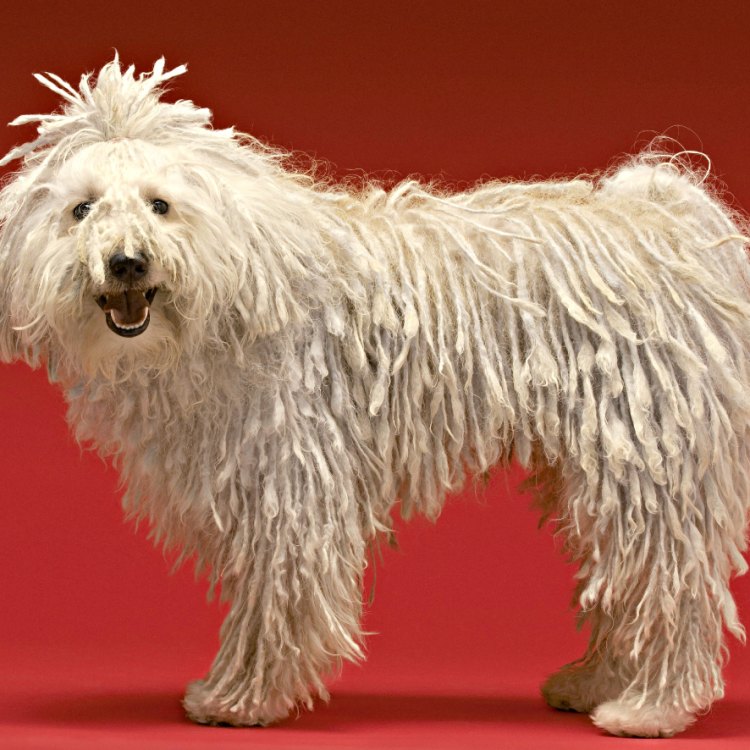
Komondor
- Adult Size: 110-130 pounds
- Average Lifespan: 10-12 years
- Reproduction: Sexual
- Reproductive Behavior: Mating
- Sound or Call: Barking
- Migration Pattern: Non-migratory
- Social Groups: Pack
- Behavior: Protective and loyal
- Threats: None
- Conservation Status: Domesticated
- Impact on Ecosystem: None
- Human Use: Working dog
- Distinctive Features: Corded coat
- Interesting Facts: The Komondor is a livestock guardian dog breed.
- Predator: None
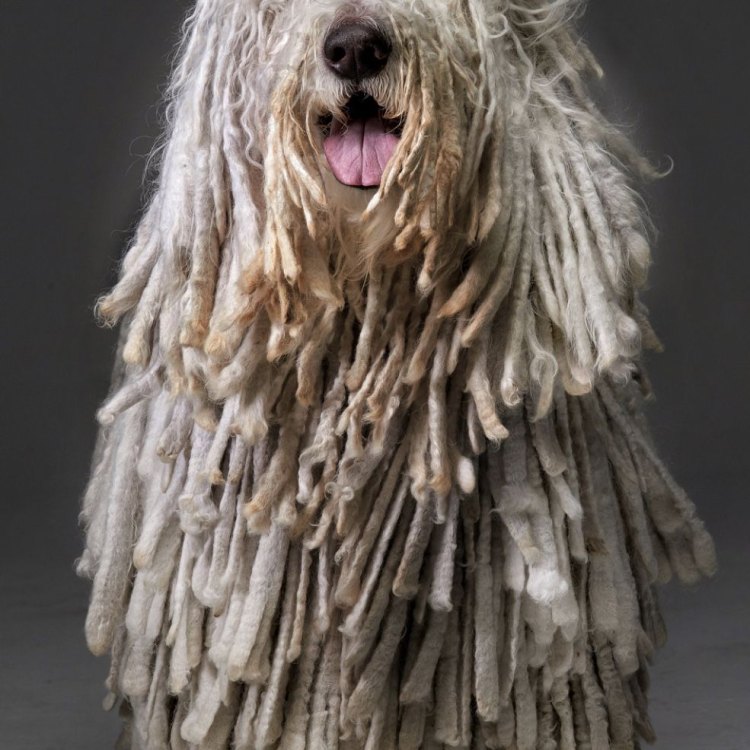
Canis lupus familiaris
The Unique and Dedicated Komondor: A Rare Breed with a Strong Purpose
In a world full of different dog breeds, the Komondor stands out with its unique and eye-catching appearance. With its distinctive corded coat and large size, it immediately grabs the attention of anyone who sees it. But there is more to this breed than just its looks.The Komondor is a rare breed, with a strong purpose and a long history PeaceOfAnimals.Com. Originating from Hungary, it has been used for centuries as a livestock guardian to protect sheep and other animals from predators. Let's dive deeper into what makes this breed so special and why it's gaining popularity among dog owners.
Appearance and Size
The Komondor is a large breed, with adult males weighing between 110-130 pounds and females weighing slightly less. They can stand up to 27.5 inches tall at the shoulder, making them an imposing figure. But their most distinctive feature is their long, corded coat.
At first glance, the Komondor may look like it has dreadlocks, but in reality, its coat is naturally formed by long, white, and coarse hairs that get twisted together as the dog matures. This unique coat serves a purpose beyond just looks, as it provides protection against extreme weather conditions and predators.
Behavior and Social Groups
Komondors are known for their protective and loyal nature Knifefish. This breed is bred to be independent thinkers and natural guardians, which makes them excellent watchdogs. They are incredibly devoted to their families and will go to great lengths to protect them.
Komondors are also known to be a pack animal, which means they prefer to live in groups. They are highly social and enjoy the company of other dogs, whether they are from the same breed or not. However, they can still be territorial and may need proper socialization and training to interact with other animals and humans.
Reproduction and Reproductive Behavior
Komondors are sexually reproductive and have a strong mating behavior. They go through the same breeding process as other dog breeds, and the females usually give birth to a litter of 6-10 puppies. The mother dog is known to be very attentive and protective of her puppies, while the father plays a role in guarding the territory and keeping predators away.
Sound or Call and Migration Pattern
As natural guardians, Komondors are vocal and tend to bark a lot. They use their deep and loud bark to alert their owners of any potential danger, making them excellent watchdogs. This trait may need to be managed if you're living in a densely populated area or have neighbors close by.
Unlike other dog breeds, Komondors are non-migratory. This means that they are not known to migrate or move from one place to another. They are content with their territory and are not likely to wander off.
Threats, Conservation Status, and Impact on Ecosystem
One of the most interesting things about the Komondor is that it has no natural threats. This breed is incredibly strong and has a fearless nature, making it a formidable opponent for any animal that could harm it or its territory. As such, the Komondor is listed as a domesticated breed, with no conservation status.
Unlike some dog breeds that have been known to impact their environment, the Komondor has no significant impact on the ecosystem. In fact, their presence can have a positive effect on the ecosystem as they keep predators away from livestock, which helps maintain a balanced ecosystem.
Human Use and Interesting Facts
Traditionally, Komondors were used as working dogs, specifically for guarding and protecting livestock. Their strong and protective nature, as well as their unique coat, made them perfect for this task. They were also used as guard dogs for the Hungarian nobles and royal households.
Today, although Komondors are still used as working dogs in some parts of the world, they are also kept as companions and show dogs. Their unique appearance and loyal nature make them great family pets, and they require moderate exercise and grooming.
Some interesting facts about the Komondor include that they were used to create other breeds, such as the Puli and the Kuvasz, and that their coat can take up to three years to mature fully.
Predator and Final Thoughts
As mentioned earlier, the Komondor has no natural predator due to its physical strength and protective behavior. However, due to their large size and strong nature, they may need to be properly trained and socialized to prevent aggression towards other animals or humans.
In conclusion, the Komondor is a unique and remarkable breed that has a strong purpose and an even longer history. It's a breed that is loyal, protective, and requires a dedicated owner who can provide proper training and socialization. If you're looking for a bold and courageous dog with a one-of-a-kind appearance, the Komondor may be the perfect addition to your family.
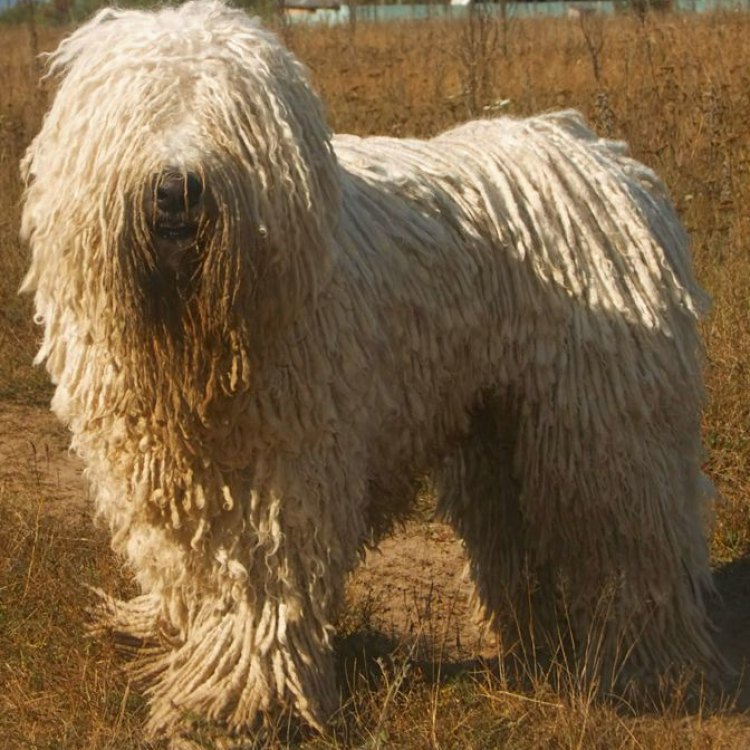
The Majestic Komondor: A Unique Breed of Hungarian Origin
Disclaimer: The content provided is for informational purposes only. We cannot guarantee the accuracy of the information on this page 100%. All information provided here may change without prior notice.

